This sequel to previous post is the fruit of summertime visits, pre-pandemic.
Warmer days offer their own particular photographic opportunities and challenges.
Heat haze and mirages can render some “long lens shots” utterly pointless.
However, they can be the making of others.
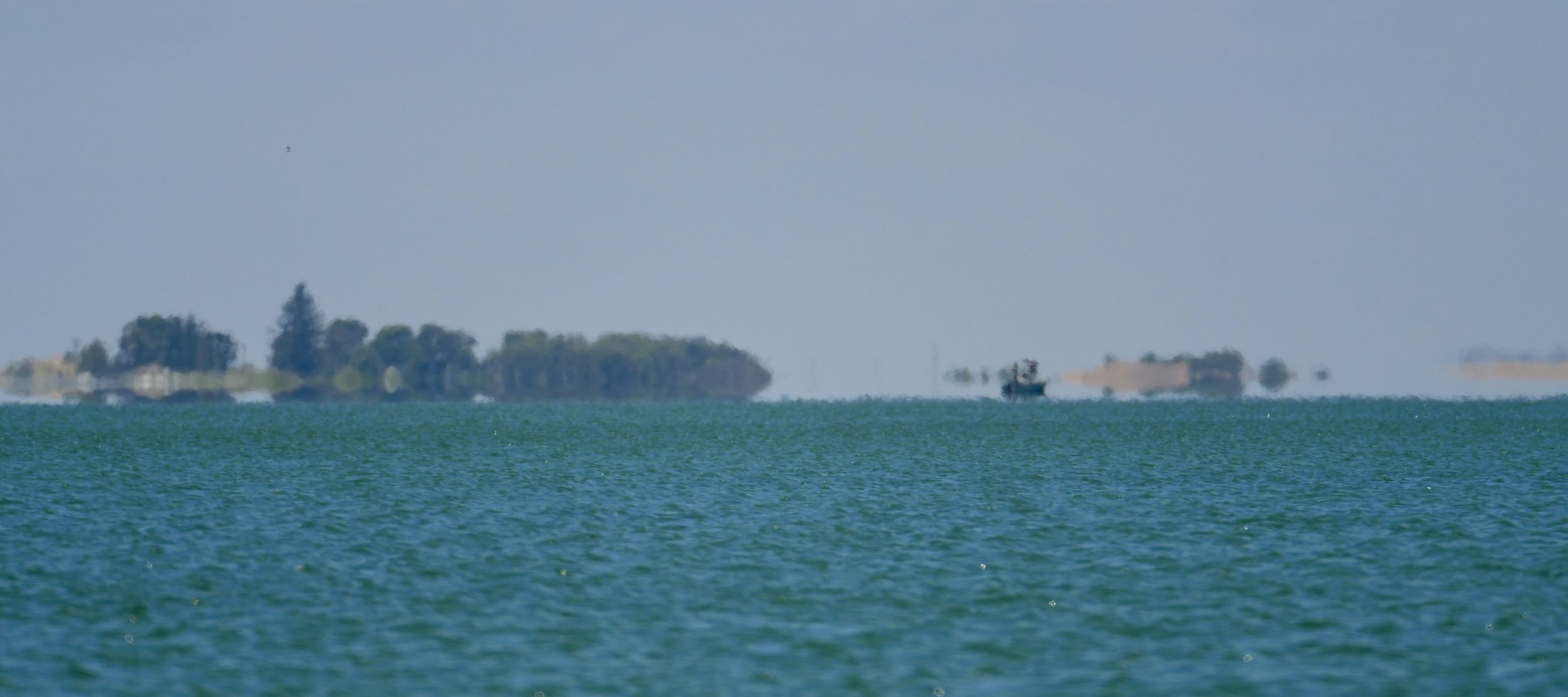
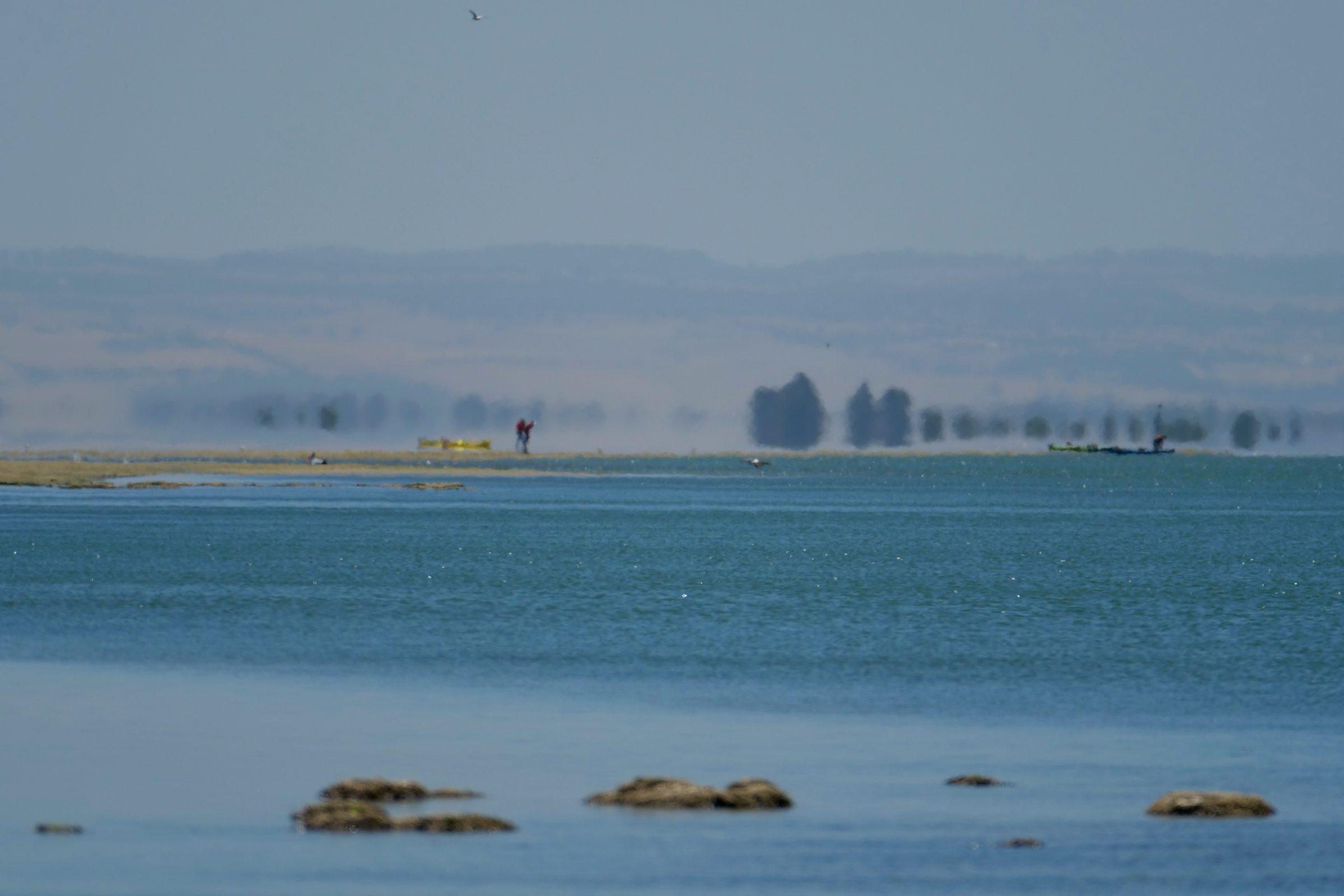
The Coorong National Park has many different aspects.
It is a particularly dynamic environment…or, more accurately, a range of dynamic environments.
On the Coorong-proper’s water – or walking through the Younghusband Peninsula’s sands, or contemplating where the peninsula meets the Coorong or the Southern Ocean – the current “state of play” can be enormously different to what it was last year…or during the last prolonged drought, or wet period…or last season…or even last week, or yesterday…or half an hour ago.
Salinity levels, general water quality and availability, and the peninsula’s rabbit population are all highly variable.
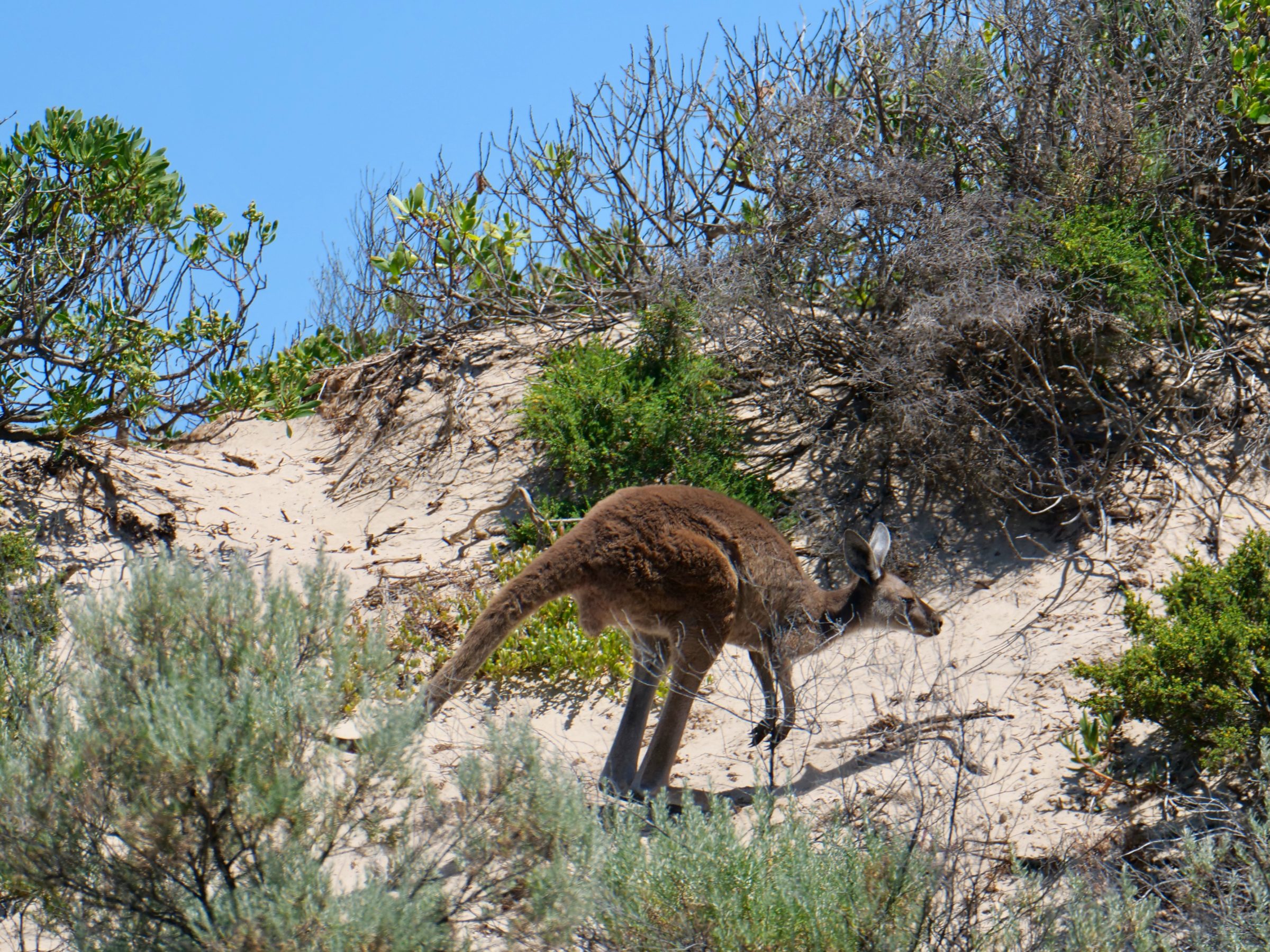
In “boom times” a first-time visitor could easily perceive this as a spectacularly “rich, abundant” region.
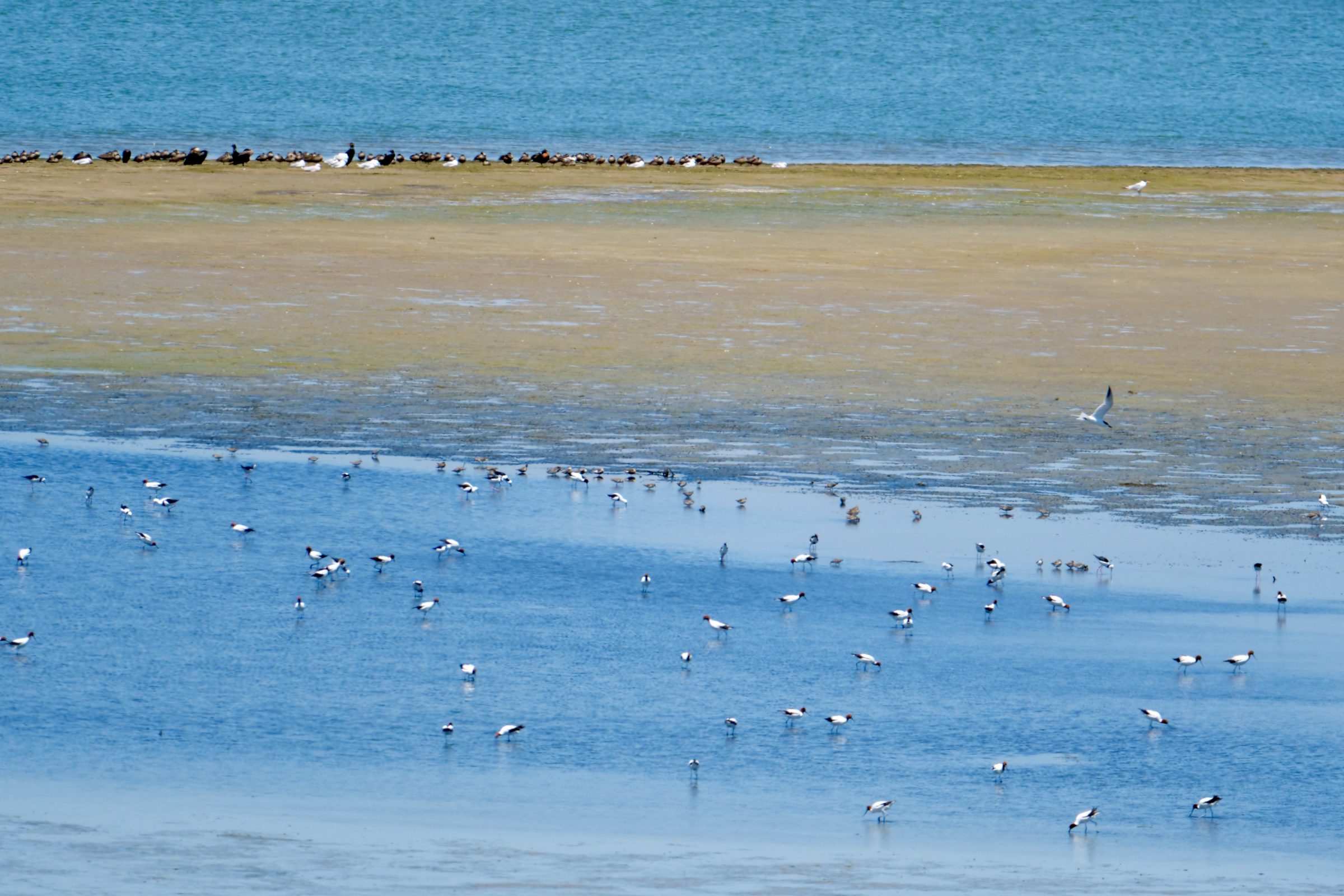
In “bad times” it appears stark, a place of scarcity.
No matter how many times you visit, it is never “the same place, twice”.
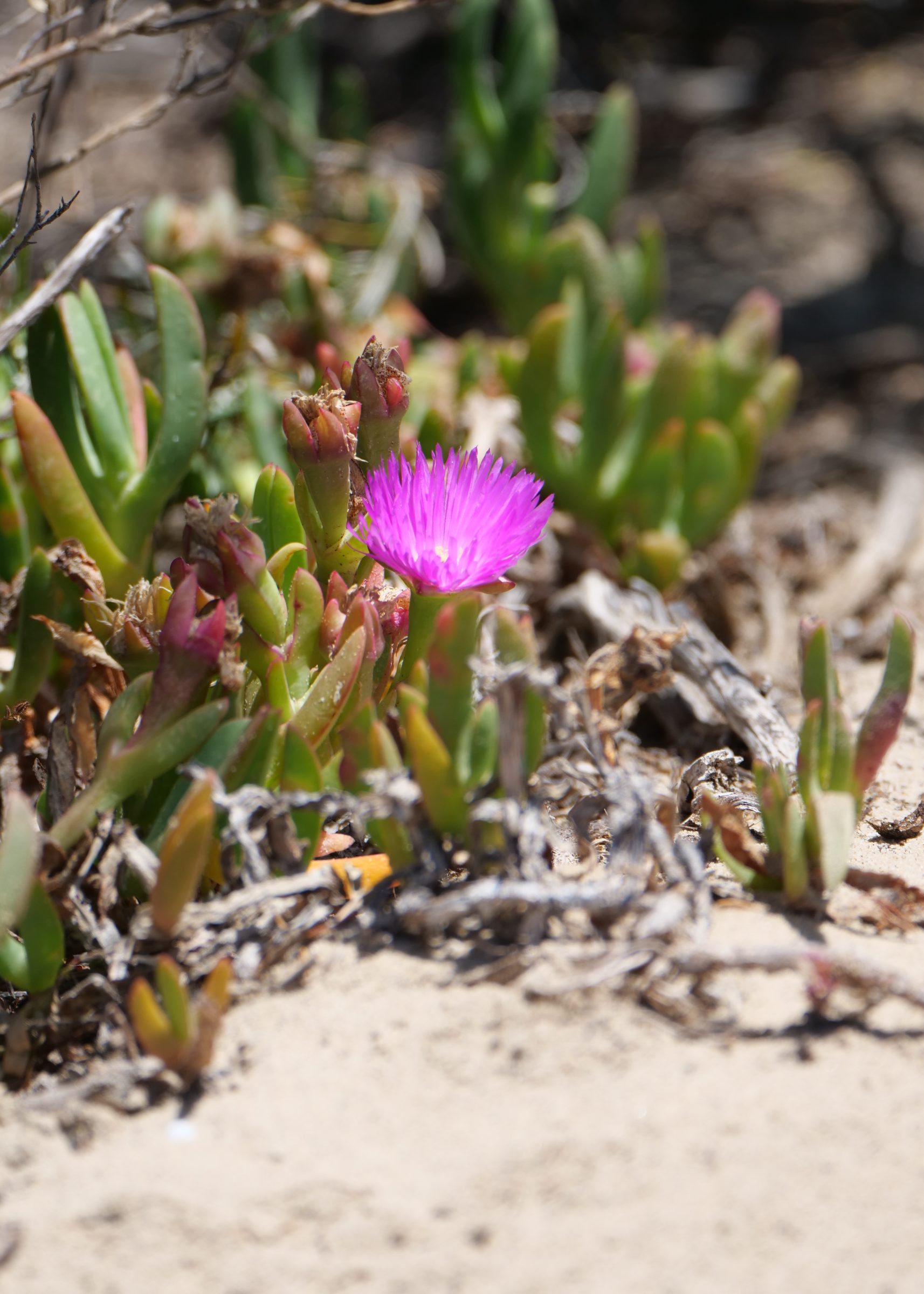
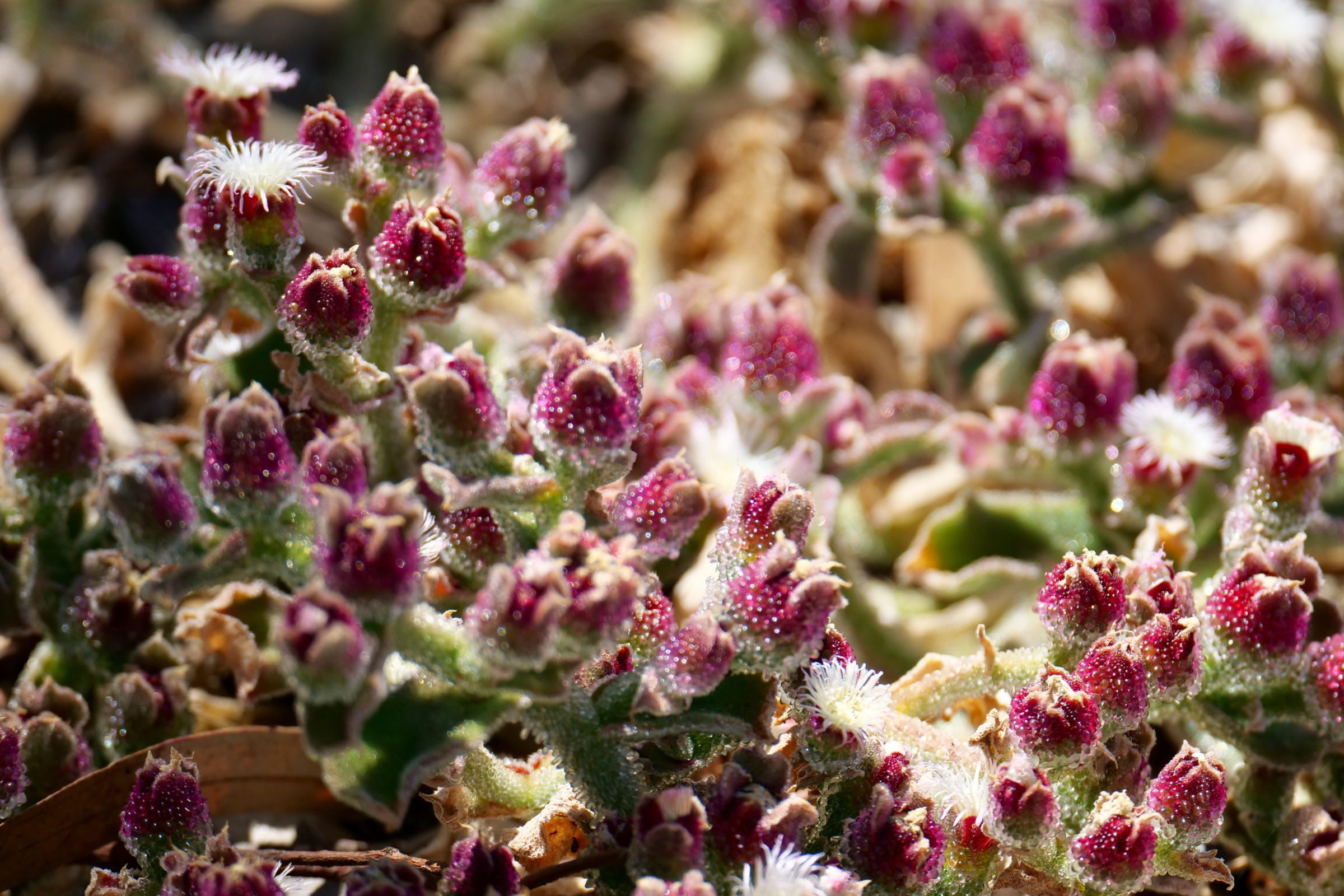
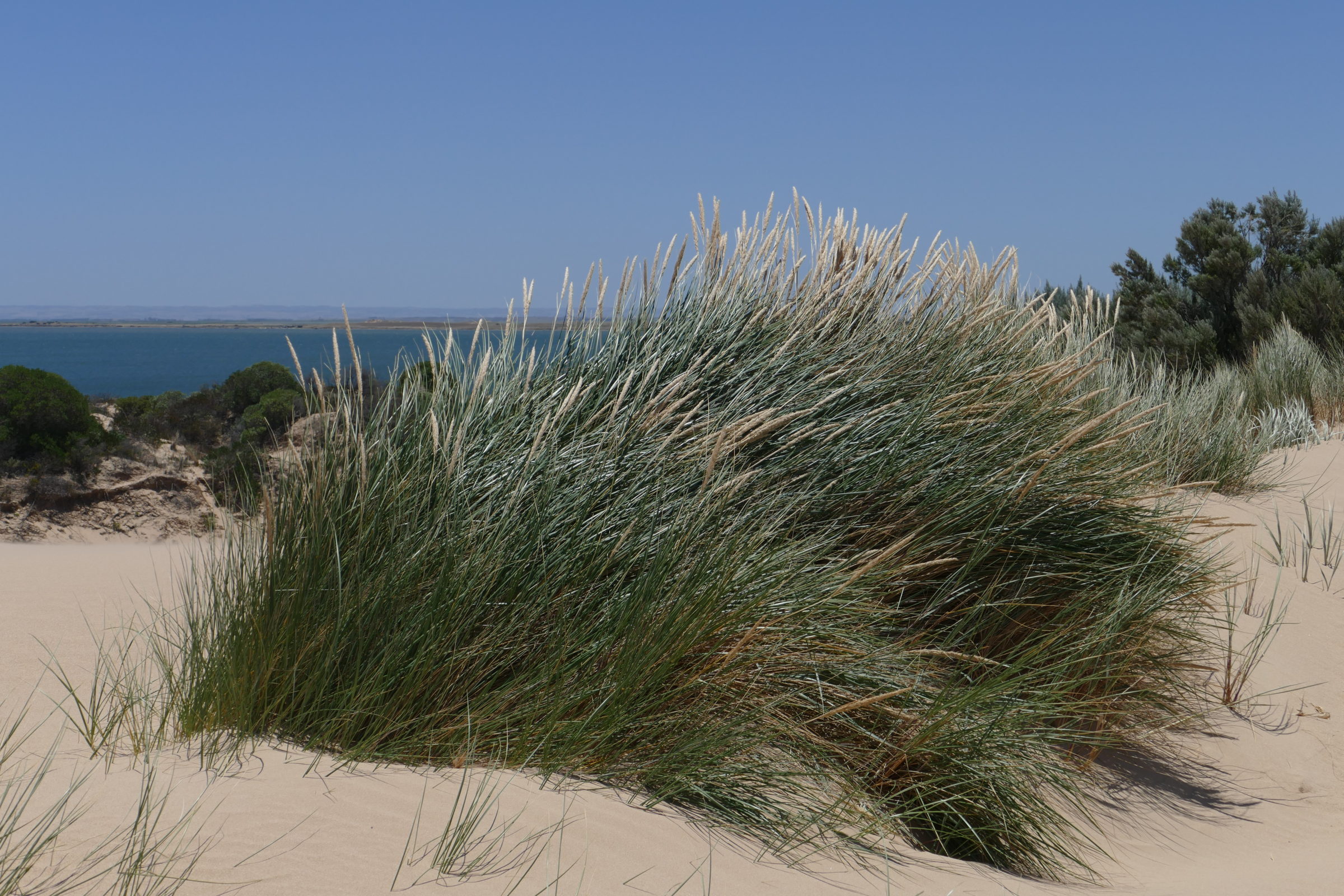
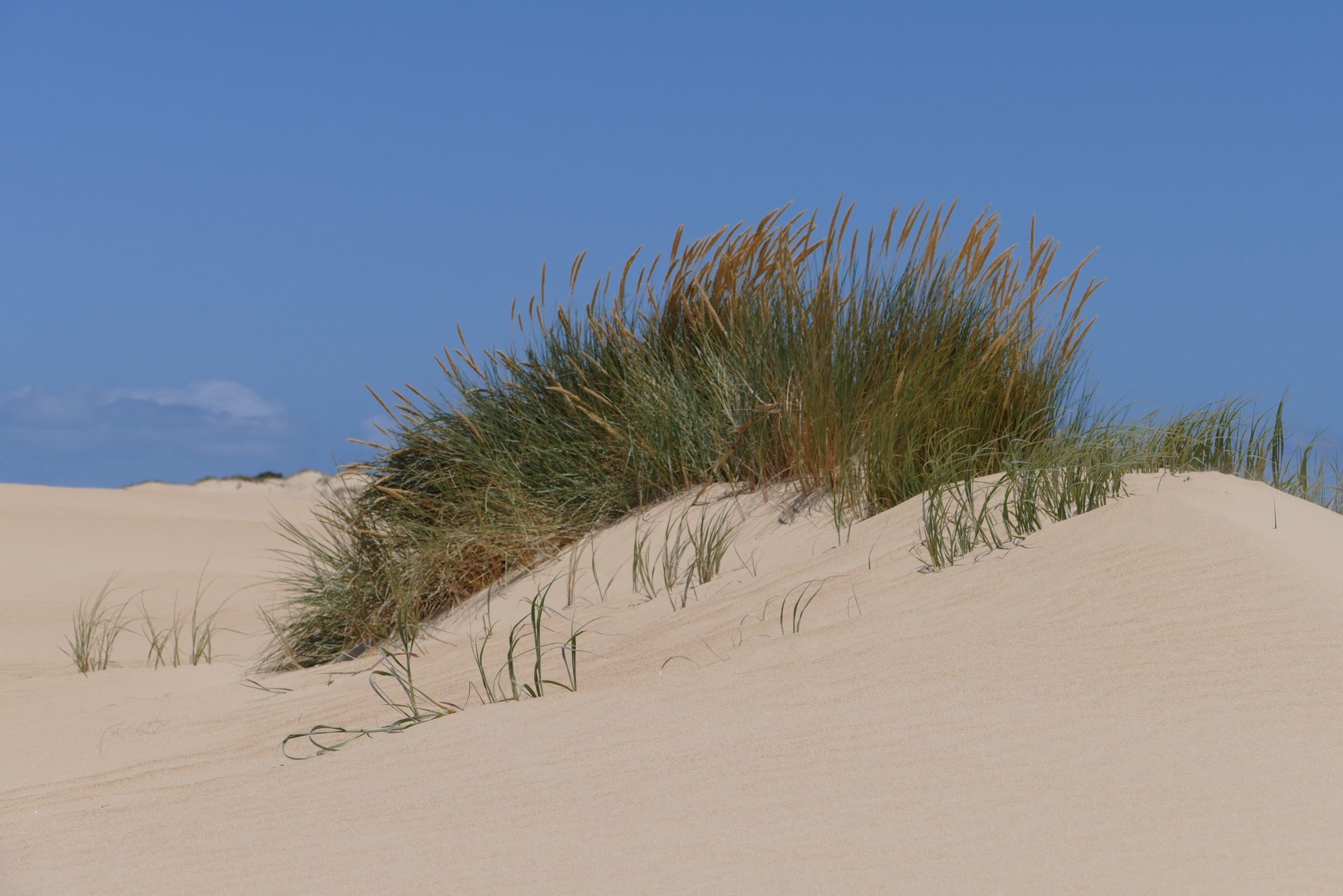
Even during lean times, if one knows where to dig within the Younghusband Peninsula’s dunes, one can can always find potable (clean, “fresh”) water.
That fact was, of course, crucial in explaining why – for thousands of years before Europeans “discovered” it – this was one of Australia’s most densely human-populated regions..
The photo below was taken from a vantage point just a short walk away from that of the dune-tops in the images above.
The “surprisingly lush” appearance of the right hand side of this little pocket of the Coorong-proper’s Younghusband Peninsula shoreline is a byproduct of a freshwater “spring”/“soak”.
The little “beachfront” is flecked with characteristically reddish, salt-tolerant plants, but right beside it is a little zone of thick, greener vegetation of a kind that cannot thrive on the immediately-adjacent, saltier, dryer ground.
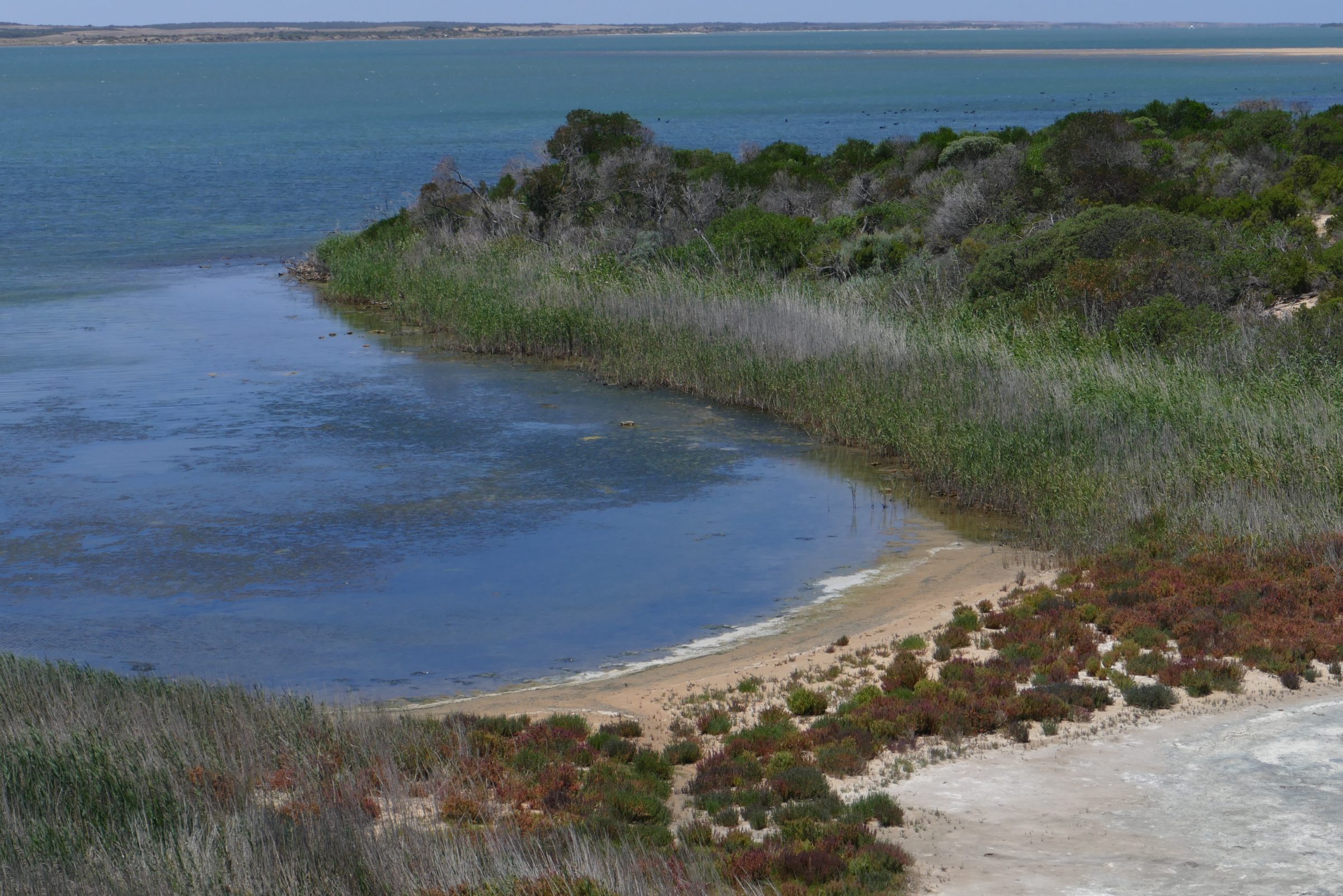
A minute or so’s walk uphill from the above image’s vantage point, my beloved and I stood atop the Younghusband Peninsula, facing northeast.
At the time, I remarked, “look – a mass murder of crows!”
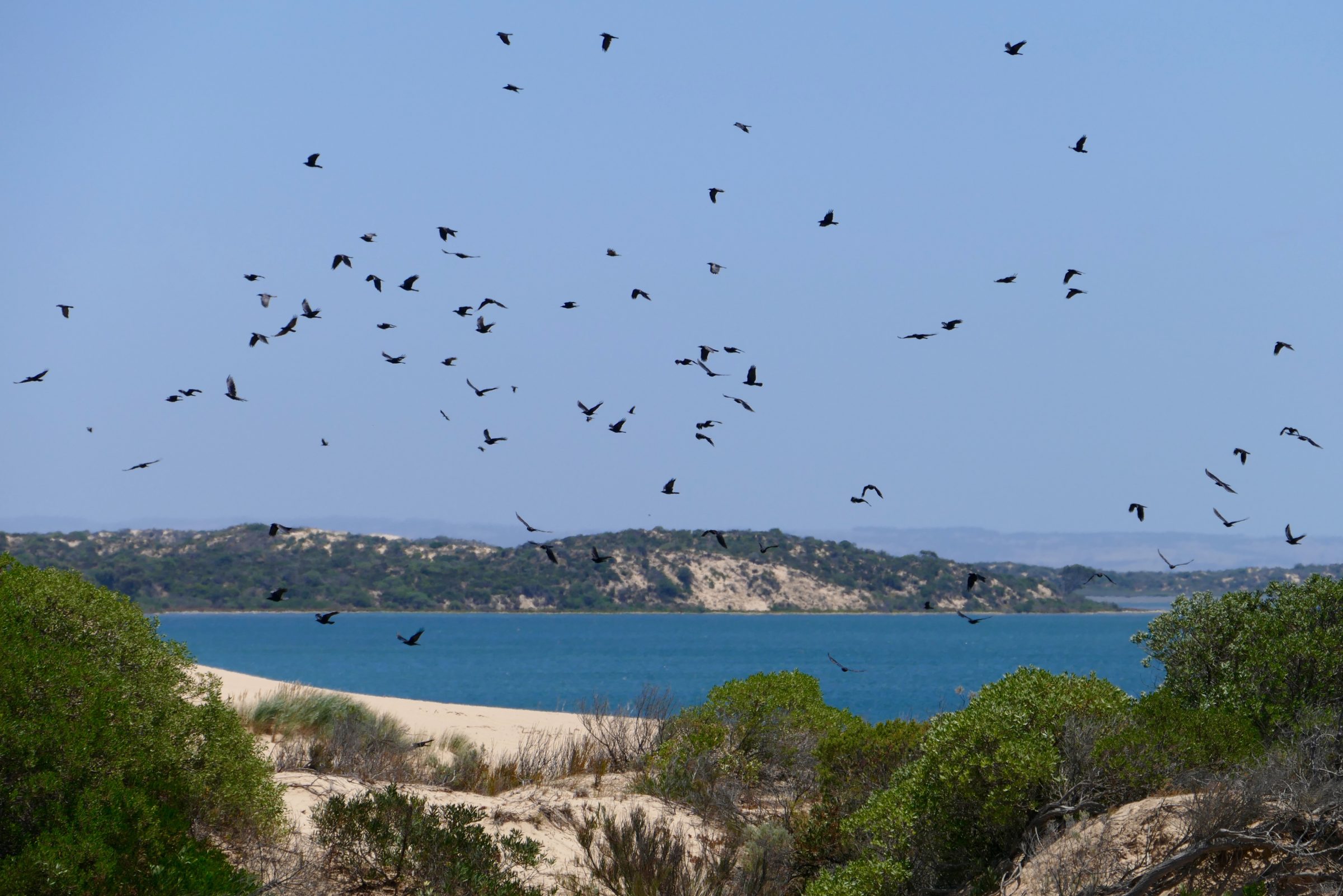
What many Australians call “crows” are actually ravens – usually, the Australian Raven (Corvus coronoides) or the Little Raven (Corvus mellori)
So, we were actually witnessing a large “conspiracy” or “an unkindness” of ravens, probably juvenile Little Ravens.
Collective nouns for birds are often bizarre, sometimes hilarious, occasionally apt.
Personal favourites include “an invisibleness of ptarmigans” and “an exultation of skylarks”.
Derogatory tags applied to ravens and crows originally voiced medieval superstitions/misconceptions.
Click here to discover more, via Michael O’Mara’s An Unkindness of Ravens: A Book Of Collective Nouns.
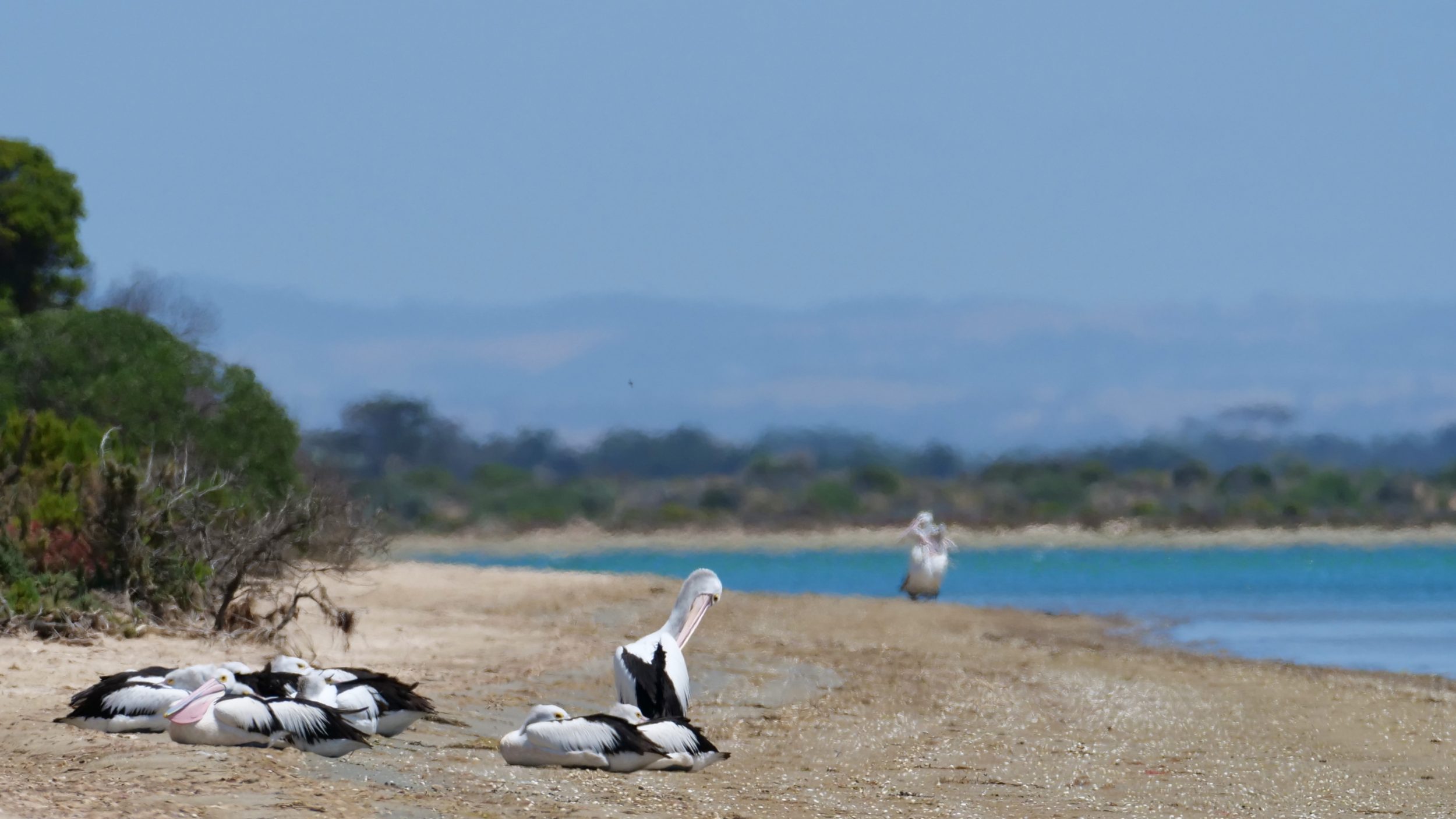
Hi Doug,
Did you catch the story about Betty the Crow and corvid & parrot intelligence on yesterday’s Science Show? Most enlightening and entertaining.
Cheers
Bob